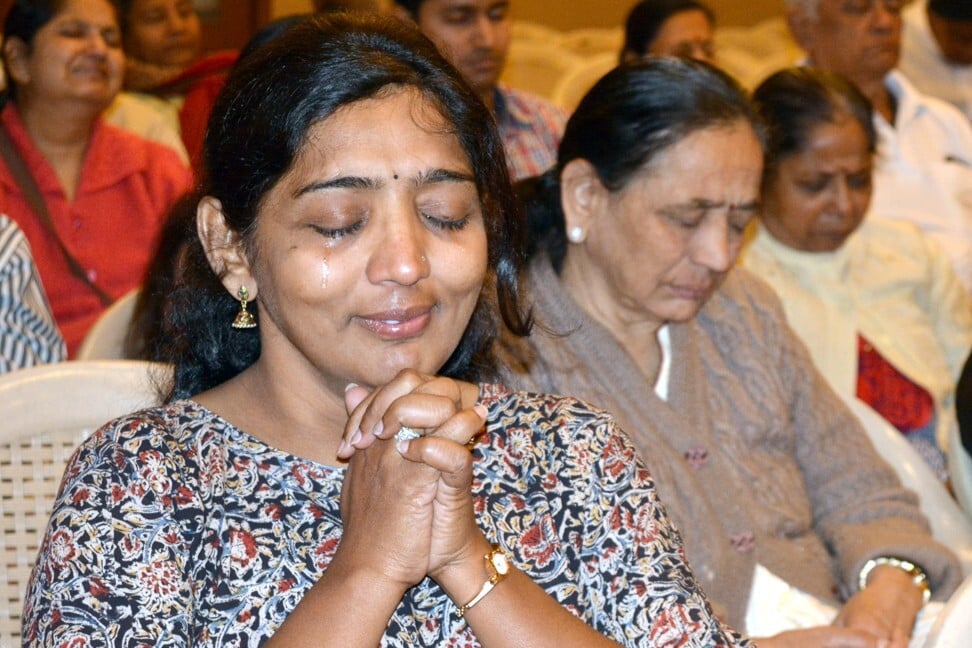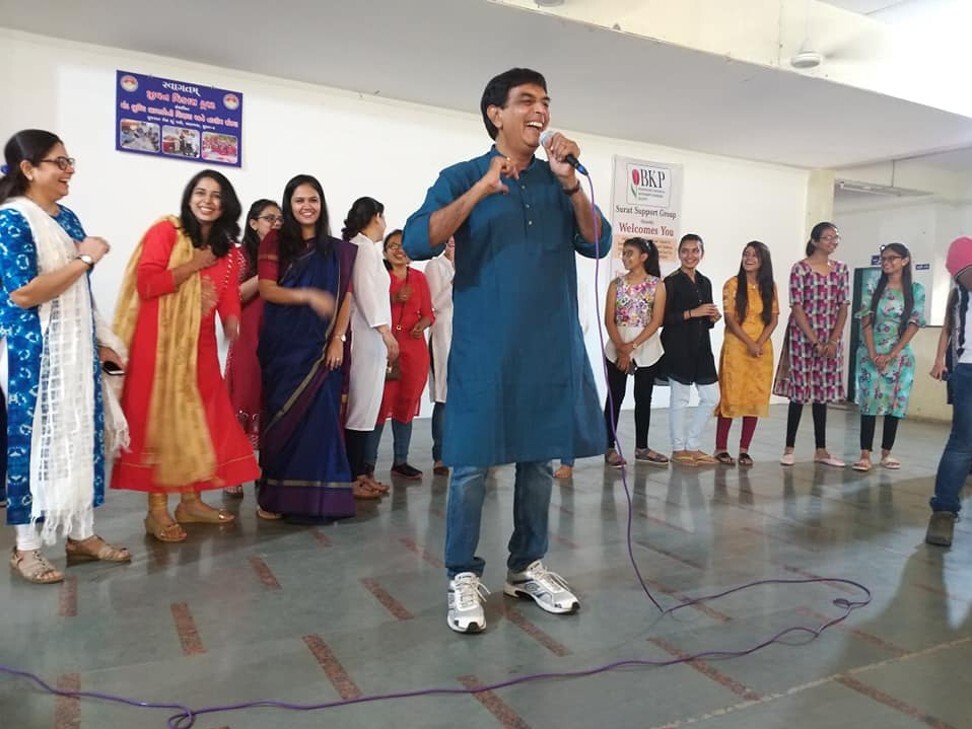
Crying clubs show laughter isn’t always the best medicine – feeling sad for a while can be just as good for you as feeling happy
- At India’s first ‘healthy crying club’, members share deeply personal stories to trigger tears and the release of feel-good chemicals in the body
- Crying clubs originated in Japan after an entrepreneur noticed how emotional typically repressed Japanese people became in divorce ceremonies
It begins as a sniffle. Soon, people reach for their handkerchiefs. Some sit silently, tears flowing down their cheeks. Others are openly weeping, until the room is filled with the sound of sobbing.
It’s just another Sunday morning in the city of Surat in Western India. Gathered in the large hall are people of all ages, from all walks of life, to attend the monthly meeting of India’s one-of-a-kind “healthy crying club”, which was started here in 2017.
“Joy and sorrow are two sides of the same coin,” Masalawala, a former radio repairman, says. “Every human being has to laugh and cry, to express his emotions. Crying therapy was suggested to me by one of the top psychologists in the city. I did some research which showed that crying can even reduce the medication for patients with psychological issues, and decided to start my crying club.”

At his first tearful session in Surat in June 2017, Masalawala shared a personal story from his life. He recalled his boyhood when he was too poor to afford 200 rupees (US$2.70) for a school trip, and his mother secretly sold her gold earrings to pay for it. While telling this tale, he choked up with emotion, and saw many in the audience start to tear up as well.
That set the stage for his healthy crying club, in which audience members share deeply personal, emotional incidents from their lives, which they may never have shared before. Masalawala also plays soulful music, and asks audience members to close their eyes and recall sad events from the past. “Quite often, this experience also makes people emotional and weepy,” he explains.
Let it all out: why crying is actually good for your health
Over the last three years, on the last Sunday of each month, people have gathered at the Surat Crying Club and experienced a purging of emotions, a catharsis of sorts. Masalawala recalls a family in which the daughter had a skin disease, and was ostracised by friends and distant relatives. Some family members felt so bad, they had contemplated self-harm. At his session they shared their repressed feelings, and left feeling more hopeful.
“These are the stories which give me hope every day, and make me feel blessed that I am helping people by just encouraging them to share and shed tears,” says Masalawala.

Crying doesn’t just clear the mind but also the eyes and tear ducts, and is even more effective than eye drops, says ophthalmologist A Saibaba Goud, who helps visually disabled children in India and others who are visually challenged in India, and who himself attended a crying club session.
Crying clubs originated in Japan, where people are known for repressing their emotions. The first was reportedly started in Tokyo in 2013 by entrepreneur Hiroki Terai after he saw how emotional people became in divorce ceremonies. The Japanese version, called rui katsu (“tear activity”), includes tear-jerking content from short films, video clips and sad poetry, all designed to move the audience to tears.
There is still some mystery surrounding the crying process and how it helps us feel better.

Though some other species shed tears reflexively when irritated or in pain, humans are the only creatures whose tears can be triggered by emotions. In babies, tears have the obvious and crucial role of soliciting attention and care from adults. But it is less clear what triggers tears in grown-ups.
Frey also suggested that people should not tell a crying person to not cry; they will stop crying when they are comforted.
Nine facts about crying, including why good sex can set you off
Crying is a natural human response to grief and hurt. Dutch psychologist Dr Ad Vingerhoets, author of the 2013 book Why Only Humans Weep: Unravelling the Mysteries of Tears, feels that “the cathartic effects of crying may result from the comforting reactions of others, rather than the act of crying per se”.
Among his most surprising discoveries was that we perceive crying people not necessarily as weak and incompetent, but more as warm, reliable and honest.
“If you suppress your emotions, it stays in your unconscious mind, and could manifest itself in the form of behavioural problems or mental health complications,” says Akanksha Pandey, a clinical psychologist at the Fortis Hospital in Bangalore. “Adolescents who bottle up feelings may resort to substance abuse or self-harming behaviour, so it’s always preferable to have a good cry and release your tensions.”

Masalawala says the act of crying releases oxytocin and endorphins – feel-good chemicals that can actually make us feel better.
As American author Steve Maraboli says, whose quotes are widely shared on social media: “Cry. Forgive. Learn. Move on. Let your tears water the seeds of your future happiness.”

